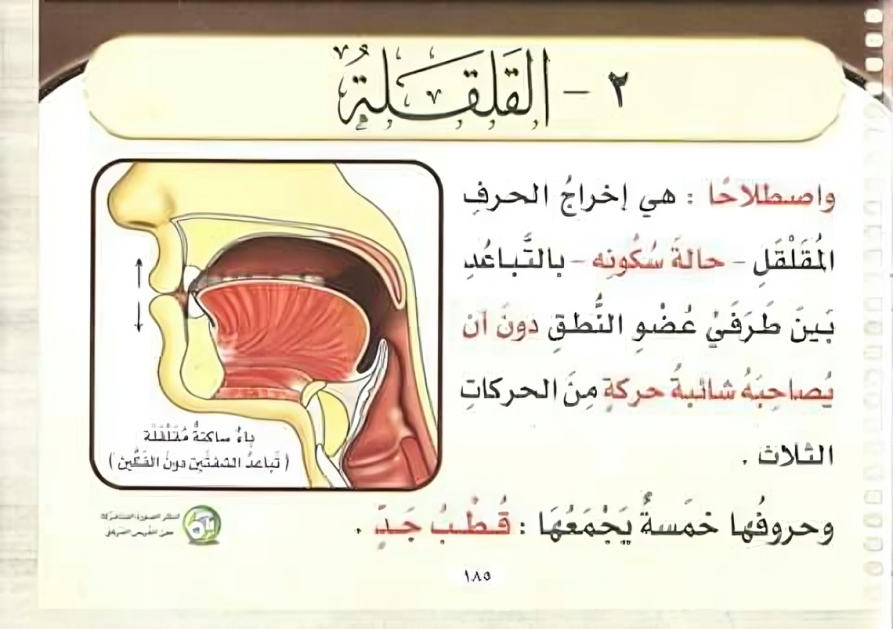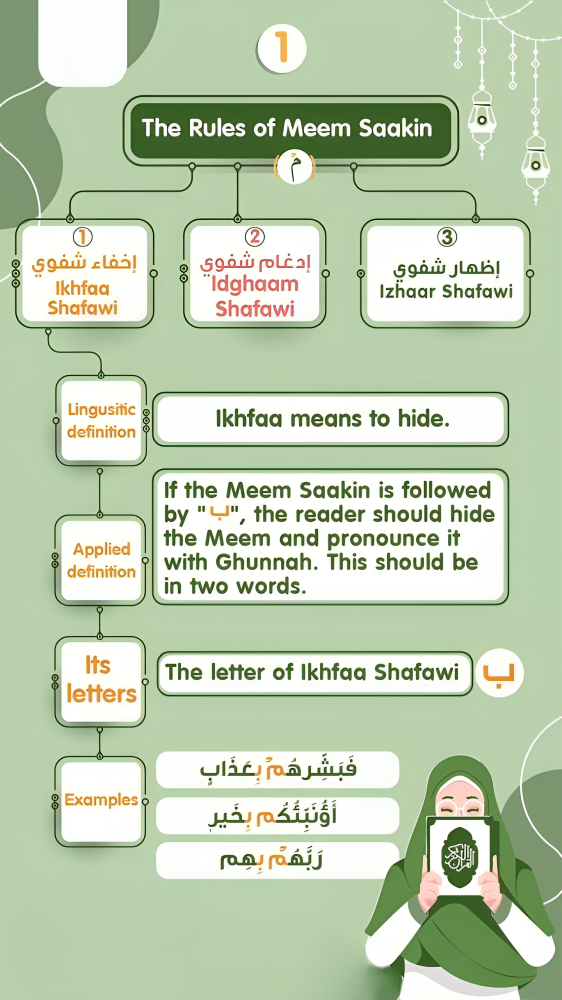Attributes of the Letters
In the study of Tajweed (تجويد), understanding the attributes of the letters (صفات الحروف) is a crucial step toward mastering the correct pronunciation of the Arabic alphabet as recited in the Qur’an. These attributes are the characteristics that define how each letter is articulated.
There are two primary types of attributes:
1. Basic or Essential (صفة لازمة): These are inherent characteristics that each letter always possesses, regardless of the context.
2. Conditional or Temporary (صفة عارضة): These attributes manifest in specific situations due to external factors, like surrounding letters or vowel marks.
In this lesson, we will focus on the Basic or Essential Attributes and explore them in depth.
Basic or Essential Attributes (الصفات اللازمة)
There are 17 essential attributes, and they are divided into two categories:
1. Attributes with opposites (صفات لها ضد)
2. Attributes without opposites (صفات لا ضد لها)
Attributes with Opposites (صفات لها ضد)
Among the 17 essential attributes, 10 attributes have opposites. This means that each letter possesses one attribute from each pair of opposites. Below is a detailed explanation of these opposites along with examples:
Al-Jahr (الجهر) vs. Al-Hams (الهمس)
Voicing vs. Whispering
Example: Letters such as ب (ba) and د (da) are examples of letters that have jahr. These letters are pronounced with a clear, voiced sound.
Example: The letter س (seen) is an example of hams. It is pronounced softly, without the use of the vocal cords.
Ash-Shiddah (الشدة) vs. Ar-Rikhwah (الرخاوة)
Strength vs. Softness
Example: The letter ت (ta) exhibits shiddah, as it is pronounced with a complete stoppage of the airflow.
Example: The letter ف (fa) has the attribute of rikhwah, as it allows the air to flow without obstruction.
Al-Isti’laa (الاستعلاء) vs. Al-Istifal (الاستفال)
Heavy vs. Light
Example: Letters like ق (qaaf) and ط (taa) have isti’laa, making them ‘heavy’ letters.
Example: Letters like ب (ba) and ت (ta) have istifal, making them ‘light’ letters.
Al-Itbaaq (الإطباق) vs. Al-Infitaah (الانفتاح)
Closed vs. Open
Example: Letters such as ص (saad) and ط (taa) exhibit itbaaq.
Example: The letter س (seen) is an example of infitaah, as the mouth is open during pronunciation.
Al-Qalqalah (القلقلة) vs. Non-Qalqalah Letters
Echoing vs. No Echo
Example: Letters like ق (qaaf) and ب (ba) exhibit qalqalah when they are silent (i.e., followed by a sukoon). For instance, the word أَقْوَمُ is pronounced with a bounce on the ق.
Non-Qalqalah letters do not exhibit any bouncing or echoing sound.
Summary of Attributes with Opposites
| Attribute | Opposite Attribute | Description | Example Letters |
| Al-Jahr (الجهر) | Al-Hams (الهمس) | Voiced vs. Whispered | ب (ba), د (da) vs. س (seen), ف (fa) |
| Ash-Shiddah (الشدة) | Ar-Rikhwah (الرخاوة) | Strong vs. Soft | ت (ta), ب (ba) vs. ف (fa), س (seen) |
| Al-Isti’laa (الاستعلاء) | Al-Istifal (الاستفال) | Heavy vs. Light | ق (qaaf), ط (taa) vs. ت (ta), ب (ba) |
| Al-Itbaaq (الإطباق) | Al-Infitaah (الانفتاح) | Closed vs. Open | ص (saad), ط (taa) vs. س (seen), ت (ta) |
| Al-Qalqalah (القلقلة) | Non-Qalqalah Letters | Echoing vs. No Echo | ق (qaaf), ب (ba) vs. all others |
Practical Applications of Attributes
Example 1: The Word قَدْ (qad)
In the word قَدْ, the letter ق (qaaf) has the attributes of:
• Al-Jahr (voiced)
• Ash-Shiddah (strong)
• Al-Isti’laa (heavy)
• Al-Itbaaq (closed)
• Al-Qalqalah (bouncing sound when silent)
Example 2: The Word سُبْحَانَكَ (subhanaka)
The letter س (seen) has the attributes of:
• Al-Hams (whispered)
• Ar-Rikhwah (soft)
• Al-Istifal (light)
• Al-Infitaah (open)





